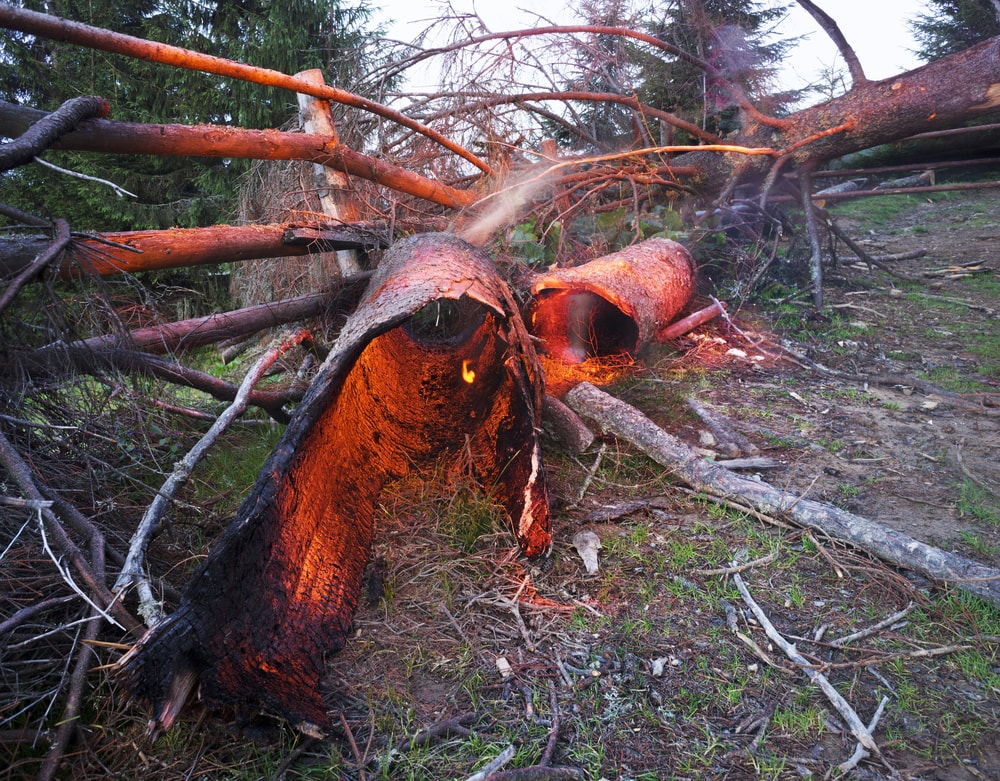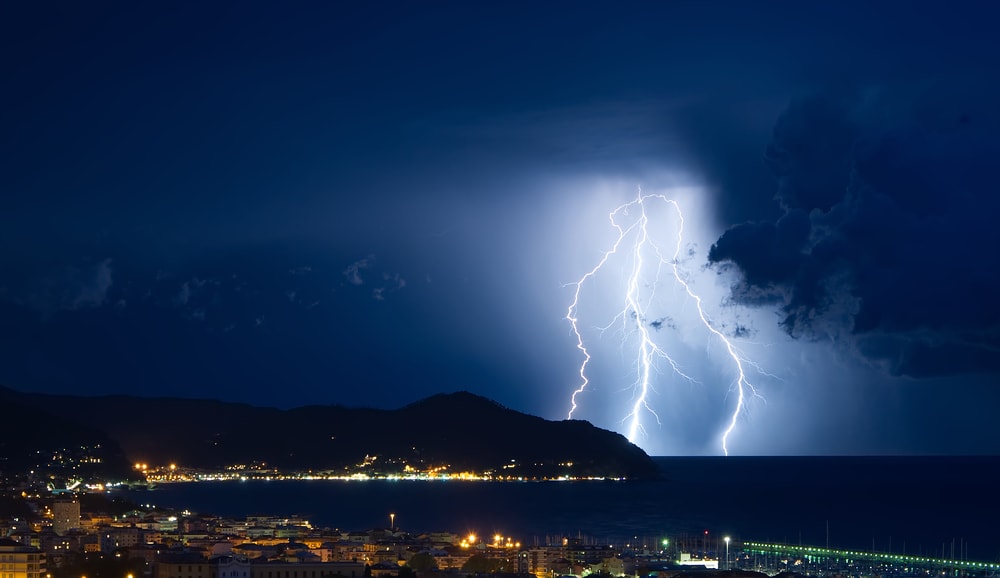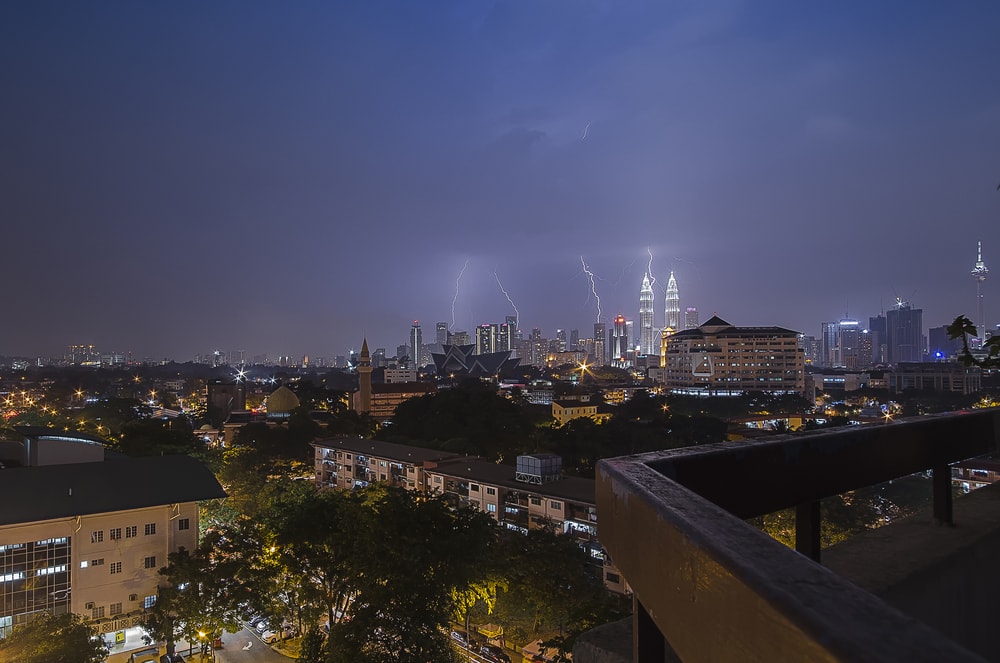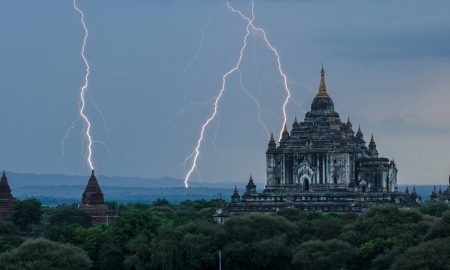Did you know that Malaysia holds one of the top spots for the highest number of lightning strikes in the world? Within Malaysia, the local Meterological Department has identified Subang Jaya as having the highest number of lightning incidents in the country with up to 240 days of lightning per year. This translates to about 25 – 40 lightning ground flashes per square kilometer per year. For a full picture, the Subang Jaya township spans roughly 70 square kilometers. So that’s about 1,750 – 2,800 lightning strikes in the entire Subang Jaya township per year. That’s a lot of lightning.
In 2014, local lightning expert, Prof Ir Dr Mohd Zainal Abiding told Astro Awani that Malaysia experiences an average of 180 to 200 thunderstorm days per year, which is quite high compared to the western region. And of course, there’s no thunder without lightning.
Lightning strikes are one of Mother Nature’s more powerful displays with each bolt containing up to 1 billion volts of electricity – which is enough to power about 56 houses for an entire day. There are actually four types of lightning, but there’s only one type that concerns us humans.
Cloud-to-ground Lightning
This is the type of lightning that we commonly see that ‘strikes’ the earth. So what happens? Well, a series of negative charges from the clouds race towards the earth at about 300,000 kph, heading towards positively charged objects – which is unfortunately most things on Earth. At about 46 meters, the positively charged object will release a surge of positive electricity that rises up through a tree, building, or even person, to meet the negatively charged stream. When the two streams connect, an electrical current of negative charges will fly down the positive stream towards the earth while a flash of light heads upwards back to the clouds, transferring electricity and balancing out the charges in the clouds. This is what we see as lightning.
Weird as it may seem, the flash we see travels upwards and not downwards, but since it all happens very quickly (mere nanoseconds), it looks to us like a flash of light traveling downwards and striking the earth.
The reason Malaysia has one of the highest lightning strikes in the world is due to its location. Countries nearer the equator are much warmer which leads to more cloud formation which, in turn, leads to more formation of thunderclouds which causes thunderstorms.
According to Dr Zainal, as reported by The Star last year, Malaysia is especially prone to lightning strikes during the intermonsoon seasons between April and May and October to November. According to the Meterological Department of Malaysia, most thunderstorms over land occur in the afternoon or evening while nighttime storms happen out at sea.
Zappity Zap
Lightning can, obviously, be very dangerous. Buildings and trees that have been struck by lightning can show severe damage. Piece of concrete walls are broken apart and trees are burnt to a crisp – all from a single strike. And when lightning strikes in an area that is already wet with rain, the damage can get much worse.
Last year in Norway, over 300 wild reindeer were found dead. They were believed to have been electrocuted when lightning struck the wet ground which transferred the energy to the entire herd, killing them simultaneously and instantly.

Humans don’t fare any better. National Geographic reports that about 2,000 people are killed worldwide by lightning each year. According to data from the Centre for Electromagnetic & Lightning Protection (CELP), lightning has killed 112 and injured 156 people in Malaysia between 2008 and early 2017.
When lightning strikes a living being, electric charges flow over the skin as well as internally. The more a strike flows internally, the more damage it causes. The heart is the organ that’s most commonly affected, but lightning strikes can also cause deep tissue destruction as well as burns, amnesia, hearing loss and tinnitus, headaches, sleep disorders, numbness, and more.
When thunder roars, go indoors
So when it comes to lightning, prevention is most definitely better than cure. When the thunderstorms begin, you’ll want to make sure you follow these safety guidelines to reduce the chances of being struck by Zeus:
1. Stay inside
Head indoors as soon as you hear thunder or see lightning. Don’t wait for the rain to start because lightning has been known to strike even before that. Seek shelter inside sturdy concrete buildings, inside a metal vehicle, or under large structures like a bridge. DO NOT hang around outside near large structures. You might be struck by debris if that structure is hit by lightning.
2. Stay low
If you cannot find an indoor shelter, get down from higher ground and get into any depressions in the ground or into a dry drain. When outside, stay away from isolated tall structures (like a tall tree in the middle of a field). The tallest objects are usually the ones that get struck. So it would also be a good idea to squat with your feet together (but don’t sit or lie down).
3. Stay away from electrical conductors
Never use an umbrella during a lightning storm. It makes you a target! And DO NOT touch electrical equipment or wiring and do not use a landline – use your mobile phone if you need to. You’ll want to stay away from anything that conducts electricity including copper pipes.
Once you find shelter, it’s advised to stay in there for at least 30 minutes after the last clap of thunder. As mentioned above, lightning can still strike when it’s not raining.
I’d like to end on a positive note, so I have a little fun fact for you! Did you know that the Petronas Twin Towers act as giant lightning rods for the city? The two spires attract lighting (being the tallest structure in the city) and the charges travel down to the ground via the metal exterior. So the Twin Towers are more than just a pretty structure.
"ExpatGo welcomes and encourages comments, input, and divergent opinions. However, we kindly request that you use suitable language in your comments, and refrain from any sort of personal attack, hate speech, or disparaging rhetoric. Comments not in line with this are subject to removal from the site. "






















